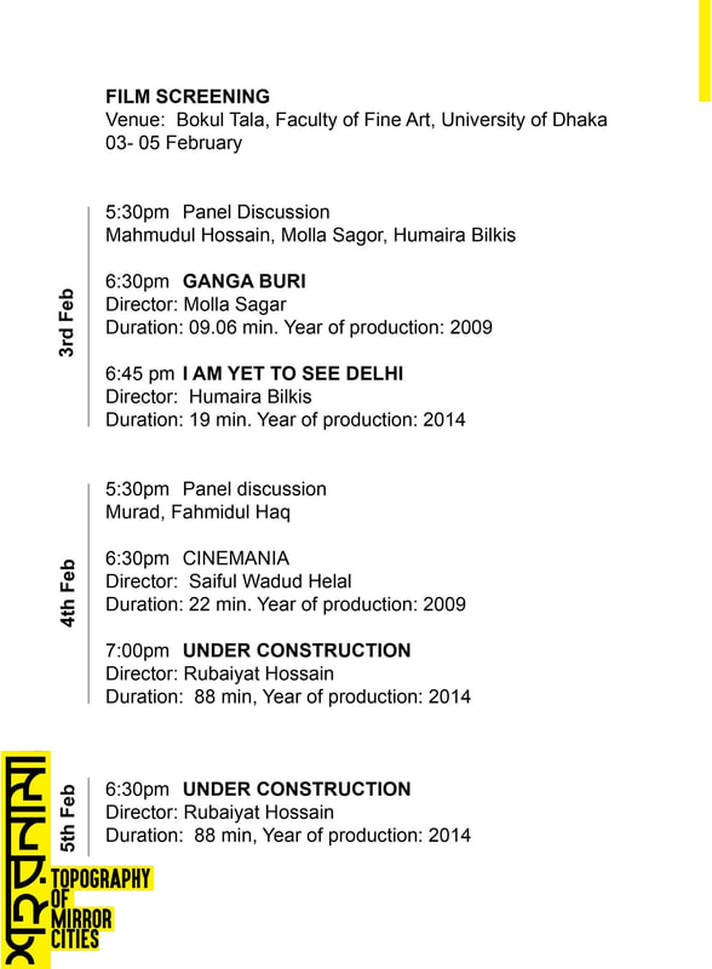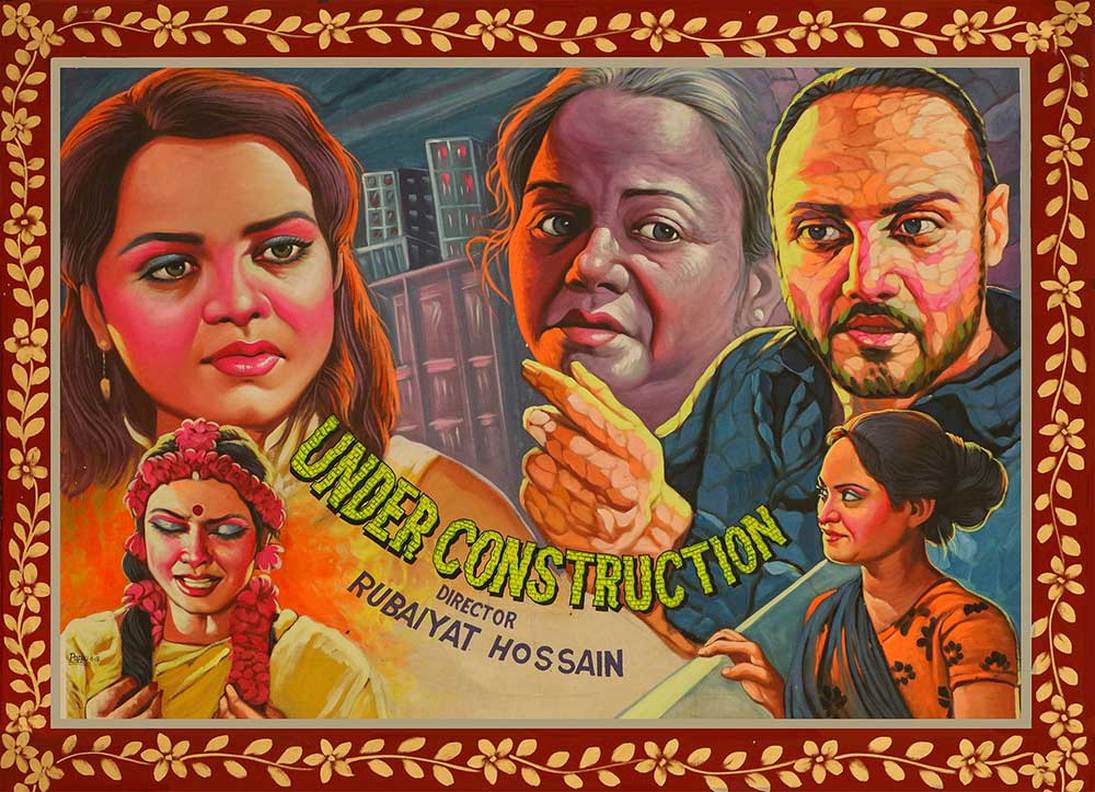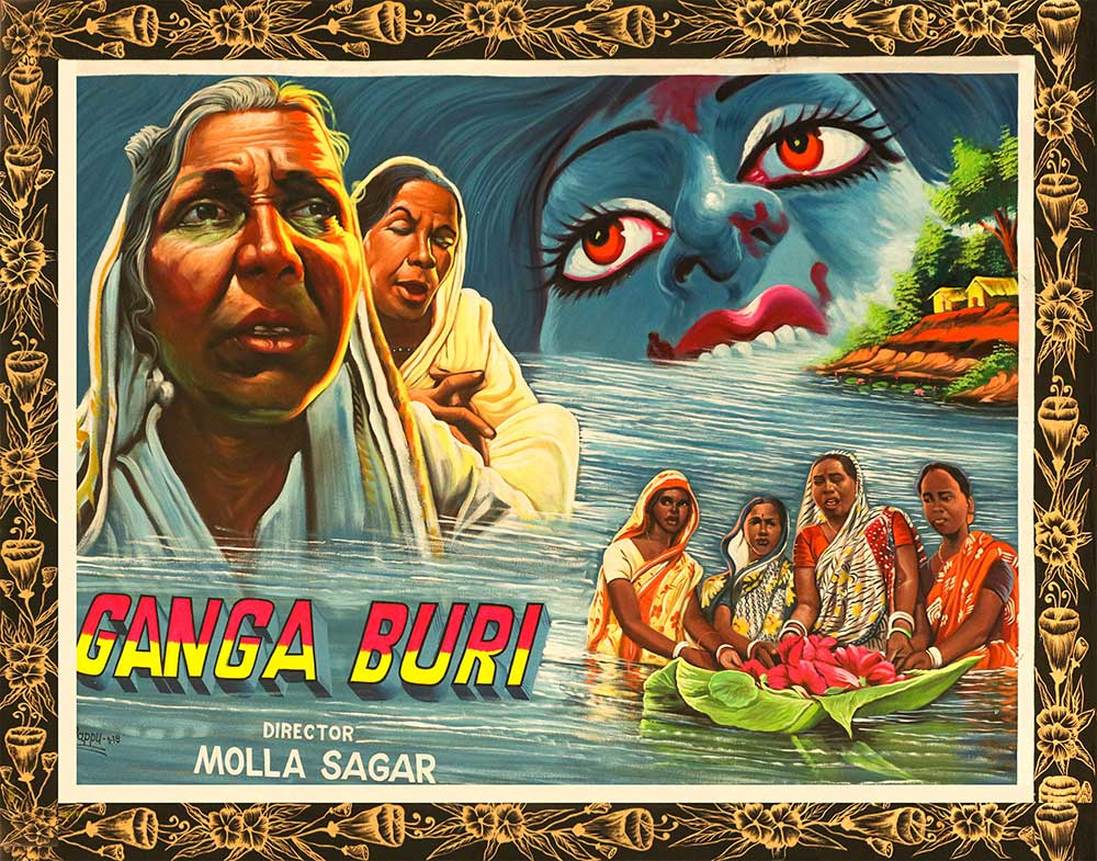
Ganga Buri
Director: Molla Sagar
Duration: 9.6 mins. Year of production: 2009
Buriganga is the river, like all river of the world. We used to take our baths and quench our thirst from its Water. People get cleansed from its water by taking baths.That's why she is the "Ganga Mother' to people on the sides. There are myths around this name. Ganga Puja is an old ritual amongst people.Nowadays, Buriganga has become polluted with filth and has turned pitch black due to the dumping of millions of tons of human/industrial waste.Even then people have not forgotten the rituals of the Buriganra. Mother Ganga feels bad for the people who come with the plate of puja. And she still hopes to purify her children with her holy water.
Molla Sagar Born in 1975 at Fakirhat of Bagerhat, Bangladesh; Molla Sagor always aspired to be a Filmmaker. He studied in Graphics Design from Dhaka University Faculty of Fine Arts. For eight years his medium of expression was Painting. Sagor got involved into documentary filmmaking witf “O Pakhi” in 2002. During his second year in Fine Arts, he started to learn photography. Both Painting and Photography alleviated his desire. He also held four solo photography exhibitions. Inspired by Ritwik Ghatak, his works reflect the reality he encounters, from people’s view- pro-people art-which echoes human rights and justice, culture and ethnic practices. Some of the mentionable films are as follows: O Pakhi, 2002, Untitled 23 July, 2003, Lets go watch a play, 2004, Dudh-koyla (coal-milk), 2006, Siren, 2012, Natives of Tornado, 2007, GongaBuri, 2010, The ilish, 2012, Joy Bangla, 2013, Dadu, The Journey of Hundred Years, 2016.
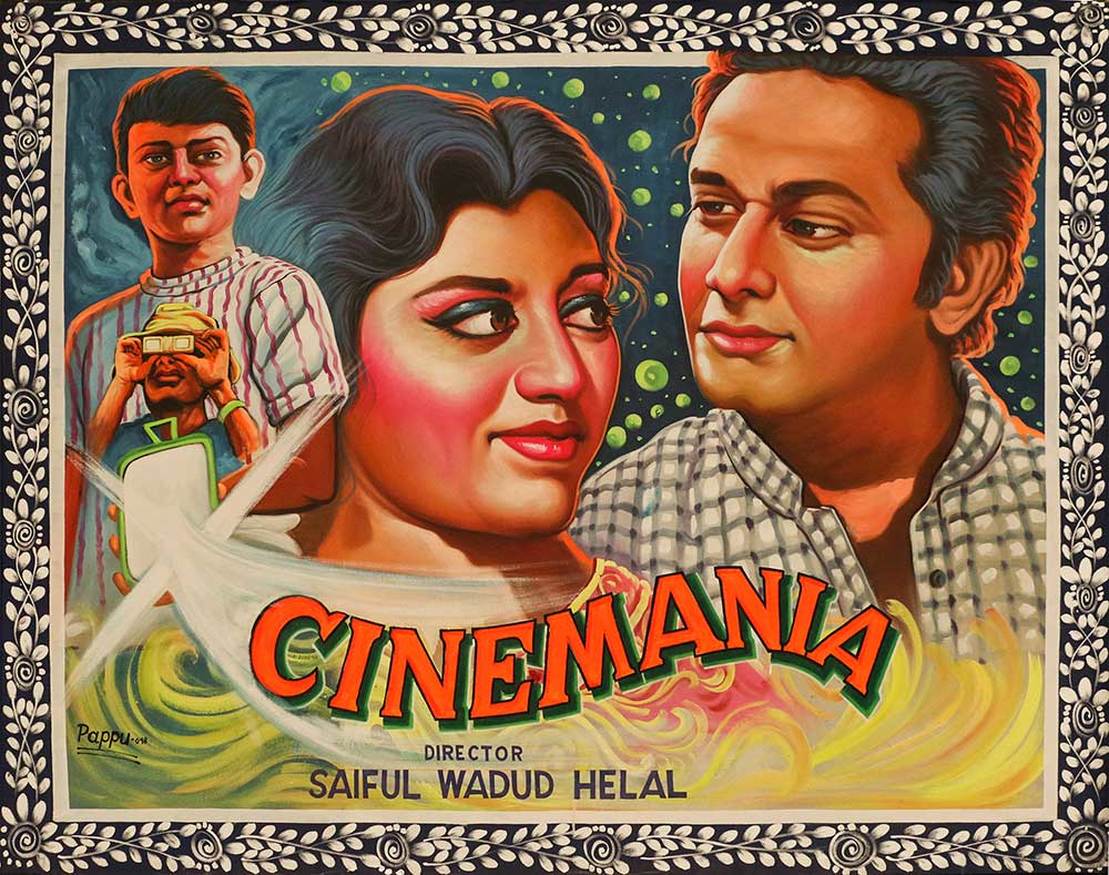
CINEMANIA
Director: Saiful Wadud Helal
Duration: 22 min. Year of production: 2009
Hundreds of cinema theater throughout the country that have been bulldozed to make way for residential buildings and shopping malls. Despite a rich legacy, Bangladesh film industry has suffered a serious setback in the wake of tasteless, vulgar, and violent content, causing audience to resort to home entertainment, satellite, and international films.The Cinema business was not like that always. There used to be a golden time of Bangladeshi cinema. Shot in 1mile² area in old Dhaka where the first silent film of the country was premiered. Through a cinema lover’s view finder in this documentary the audience will witness the reality that Bangladeshi cinema facing today.
Saiful Wadud Helal Born in Dhaka, Bangladesh in 1967, Saiful wadud helal began his career as a journalist in Montreal after receiving a diploma in Cinema studies & Television production from Montreal, Canada. He wrote, produced, Short films, TV Magazines and Documentaries in Bangladesh and abroad.
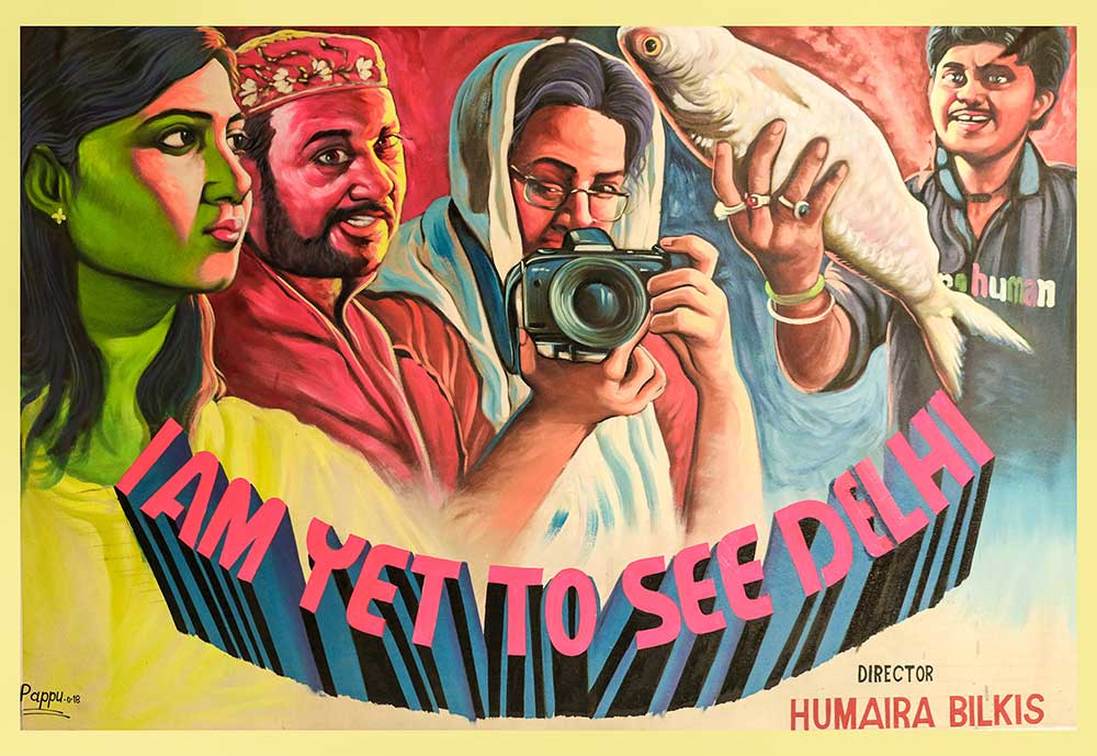
I am yet to see Delhi
Director: Humaira Bilkis
Duration: 19 mins. Year of production: 2014
Maine Dilli Nahi Dekha is a film about an outsider in the city. She visits Delhi for a year to study film making. Apart from her class work, her lonely existence forces her to encounter questions on identity and self on a register of time that is both contemporary and historical. She roams the streets of the city alone. She takes recourse to tourism- an institutional arrangement, through which she gets a glimpse of the city’s architecture, museum and mausoleums. A fresh addition to this list is ultra modern shopping malls. She conducts herself like a passive passenger unable to interact with the normative modes of representing history, until she re-focuses her contemplation on the tourists and their desire to see. She realises that the mobile camera has become a tool for consumptive gaze for the tourists. The audience sees her seeing the tourists staring at history. The act of seeing assumes the role of meta-narrative. Her journey through the city takes on new dimensions as she ponders how the rigour of normative representation is challenged in the framework of Islamic sensibilities. The prohibitions are not new to her. It is this prohibition that has shaped her thoughts, not through affirmation but a well articulated critique of it. She is however not completely free from the throes of dilemma on the question of representation and it’s modes. She finds herself tossed up and down in her dilemma like a little girl in a swing. Her repeated forays into the cross section of the city make her hyper-conscious about her name and it’s obvious Islamic connotation. She finds herself subsumed by her religious identity, which like a template sits on herself, with or without her consent. She realises the all pervasiveness of representation and it’s politics which defines a city, a nation and it’s religions. The film gives us hints as to why a rightist government invents an other in a nation or a community in order to practice it’s political discourse. It is the people, bound together in a relationship of exchange, that weaves the cultural fabric of a society. Life becomes an accumulation of numerous lived moments which exceeds representation and it’s politics. The film maker strives to represent a secular time through the contemplation of a ceaseless and untiring flow of events in front of her camera and the microphone. She refuses to look at Delhi through the eyes of a tourist. The mausoleums and architecture recede to the back ground as she reconstructs a city through all it’s dilemma, in light and shade and drenched in rain water.
Humaira Bilkis is a Dhaka based independent filmmaker. After completing her graduation in Mass Communication and Journalism from University of Dhaka, she explored fields of journalism and research as a freelancer. After pursuing a short academic career at the Department of Media and Communication, Independent University, Bangladesh, she decided to venture into filmmaking. She did her diploma in Creative Documentary from Sri Aurobindo Center for Arts and Communication, Delhi. She started filmmaking as an associate producer, which includes several international documentaries. Her previous research experiences helped her to get close into the life of her subjects. That’s how she has completed her first feature length creative documentary “Garden of Memories” in 2017, based on the life of migrated tea garden labors. Before this film, her short length self reflexive documentary film “I am yet to see Delhi’’ has achieved a special mention in Yamagata International Documentary Film Festival, Japan, 2015. Now she’s working on her another feature length documentary Bilkis and bilkis, based on her relationship with her mother in the changing context of Bangladesh society. Humaira worked as an associate producer in “ A Journey of A Thousand Miles: Peace Keepers” (95 Minutes) directed by Oscar winner documentary film maker Sharmeen Obaid Chinoy , from 2012 to 2014. “An almost perfect day” (12 minutes, 2012) was a fiction and got selected in the competition section at 3rdSiliguri International Short and Documentary Film festival 2012, Mumbai International Women’s Film Festival, 2014, IAWRT Film Festival 2014, New Delhi and Kerala Short Film Festival 2014. Documentary “We Came Walking” (10 minutes, 2014) was screened in VibGyor International Film Festival, Trissur, Kerala, India 2015. Creative documentary “I am yet to see Delhi” (20 minutes, 2015) was screened in VibGyor International Film Festival, Trissur, Kerala, India 2015 and IAWRT Film Festival, New Delhi, India, 2015. It was special mentioned by jury in New Asian Current program of (YIDFF) Yamagata International Documentary Film Festival 2015.
UNDER CONSTRUCTION
Director: Rubaiyat Hossain
Duration: 88 min. Year of production: 2014
The film revolves around the theater actress Roya’s journey in trying to reinterpret The Red Oleanders. She challenges the representation of the woman in the play and wants to make her contemporary. She situates the play in a modern day ready made garment factory. The workers have no name but numbers, they all work for a king who they never see. Tagore wrote this play as a critic of industrial civilization. The protagonist of my film at once demonstrates the political relevance of Tagore’s work in the modern day context of sweatshop labor, but she also questions Tagore’s representation of the woman as limiting and sets to free her from the cultural iconification. I find Tagore's vision of modern day capitalism very apt and contemporary even though the play was published in 1926. When I look at Dhaka city, the working class population, may they be the rickshaw-pullers or ready made garment factory workers--I can see Tagore's vision of Jokkhopuri reflected--where each person is defined by a number and profit weighs heavier than human lives. The modern Bangladeshi Muslim woman has not yet come into her full from having claimed her agency and subjectivity. She is very much still in the making. Dhaka as a city is going from the rural to urban, it is in transition, visually one won't find a single road in Dhaka where a building is not being constructed. As the city is literally and figuratively under construction so are its citizen, especially the women living there. Also, in juxtaposing Roya and Moyna (the house maid) I have tried to demonstrate that 'woman' is also not a homogenous groups. The journey into emancipation might be very different for women belonging to different social classes and realities.
Rubaiyat Hossain is one of Bangladesh’s handful of female filmmakers, known for her debut feature film Meherjaan (2011) which faced political and cultural wrath in Bangladesh for its anti-war narrative, and its critic of masculine nationalism from a feminine point of view. Her second feature Under Construction premiered at New Directors Showcase at Seattle International Film festival and was theatrically released and well received in Bangladesh in 2016. Hossain uses a feminist lens to deconstruct the otherwise phallocentric institution of cinema. Currently she lives between Dhaka and New York making films and attending Tisch School of Arts at New York University in Cinema Studies.
Courtesy:
Cinema Banner Painter: Mohammad Hanif Pappu.
Photography: Mohoshin Kabir Himalay.
Cinema Banner Painter: Mohammad Hanif Pappu.
Photography: Mohoshin Kabir Himalay.
